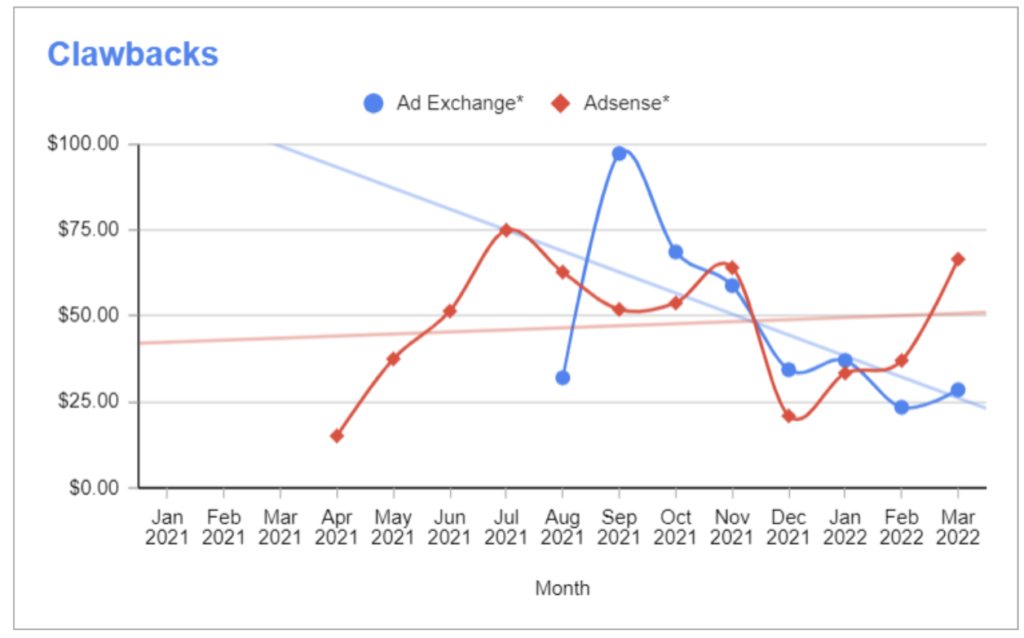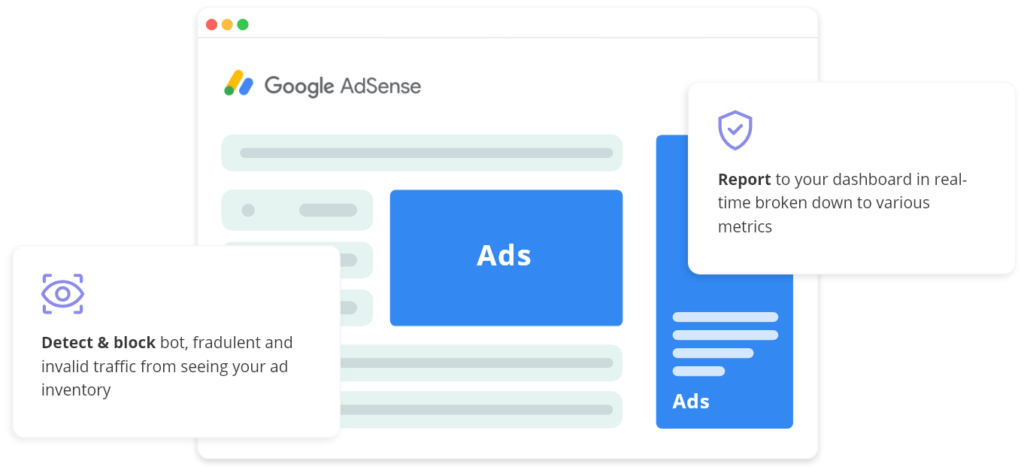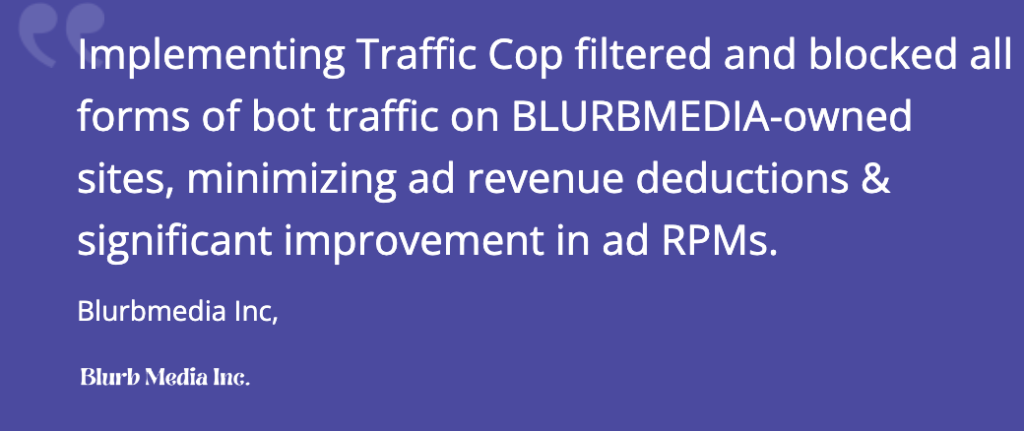What is Ad Quality? Why does it matter?
Ad quality refers to the overall user experience and effectiveness of advertisements on a website. It encompasses several factors such as relevance, placement, format, and targeting, which affect the user’s perception of the ad and its impact on their behavior.
Ad quality matters because it can significantly impact a publisher’s revenue and user engagement, as well as their website’s SEO. Poor ad quality can lead to user frustration, ad-blocking, decreased click-through rates, and reduced ad revenue.
On the other hand, high-quality ads that are relevant, non-intrusive, and targeted can improve user experience, increase engagement, and drive revenue growth for publishers. Therefore, ensuring ad quality is essential for publishers to maintain a positive user experience, generate revenue, and achieve their business goals.
How poor ad quality can harm user experience & ad revenue?
Poor ad quality can harm user experience and ad revenue for publishers in several ways:
Firstly, if ads are irrelevant, intrusive, or distracting, they can negatively impact user experience, causing frustration and annoyance. This can lead to users leaving the website or using ad-blockers, which reduces the number of ad impressions and revenue for the publisher.
Secondly, if ads are not properly placed or formatted, they can disrupt the user’s browsing experience and make it difficult for them to find the content they are looking for. For example, ads that appear in the middle of the content or cover the entire page can cause frustration and lead to a high bounce rate, resulting in lower ad revenue.
Thirdly, if ads are not targeted properly, they can appear to the wrong audience, causing them to be ineffective and leading to a lower click-through rate. Additionally, poorly targeted ads can make the user feel like they are being stalked or tracked, which can damage the publisher’s reputation and trust.
This is why poor ad quality can harm user experience and ad revenue for publishers by reducing engagement, increasing ad-block usage, and damaging reputation. Therefore, ensuring high-quality ads that are relevant, non-intrusive, and well-targeted is critical for publishers to generate revenue and maintain a positive user experience.
Low-quality ads are infamous for revenue clawbacks

Low-quality ads that have been observed on 7-figure media sites in the past and their potential impact on user experience and ad revenue:
- Intrusive ads: Ads that pop up unexpectedly, cover the content, or autoplay videos with sound can be extremely annoying to users and may cause them to leave the site or use an ad-blocker, reducing ad impressions and revenue.
- Fake news ads: Ads that promote fake news or misleading information can damage the credibility of the publisher and lead to a loss of trust among users. This can lead to a decline in website traffic and ad revenue.
- Low-quality images or designs: Ads that use low-quality images or designs can make the ad appear unprofessional and may not attract the user’s attention, leading to a lower click-through rate and revenue.
- Inappropriate content: Ads that contain inappropriate or offensive content can harm the reputation of the publisher and lead to a loss of users and advertisers, resulting in lower ad revenue.
- Overwhelming amount of ads: Sites that have too many ads can overwhelm the user and make it difficult for them to find the content they are looking for. This can lead to a high bounce rate and reduced engagement, resulting in lower ad revenue.
How ad fraud and invalid traffic (IVT) can affect ad quality

Ad fraud and invalid traffic (IVT) can significantly affect ad quality by reducing the effectiveness and relevance of ads for users. Ad fraud refers to the practice of intentionally misrepresenting ad activity or traffic to generate revenue fraudulently, while IVT refers to any traffic that does not come from real human users or is not intended to view ads. Both can lead to a lower-quality ad experience for users in several ways:
- Reduced ad relevance: Ad fraud and IVT can lead to the display of irrelevant or low-quality ads to users, which can decrease user engagement and lead to a lower click-through rate.
- Wasted ad spend: Advertisers may end up paying for fraudulent or invalid traffic that does not generate any real engagement or revenue. This can lead to a reduction in advertising budgets and a decrease in the number of ads available for publishers to display.
- Damaged reputation: Ad fraud and IVT can harm the reputation of publishers, as advertisers may not trust the traffic coming from their site, leading to a reduction in ad revenue.
- Decreased user trust: If users are exposed to fraudulent or irrelevant ads, they may lose trust in the publisher’s content and brand, leading to a decline in website traffic and ad revenue.
- Increased ad-blocking: If users encounter too many fraudulent or irrelevant ads, they may be more likely to use ad-blockers, which reduces the number of ad impressions and revenue for publishers.
Stop worrying about ad quality! Use this effective bot & ad fraud protection tool


Traffic Cop by MonetizeMore is designed to help publishers detect and prevent ad fraud and invalid traffic (IVT) on their websites. The tool works by analyzing the traffic patterns on a publisher’s site and identifying any suspicious activity that may indicate ad fraud or IVT.
Traffic Cop uses a variety of techniques to detect ad fraud and IVT, including:
- IP filtering: The tool can filter out traffic from known sources of fraudulent activity, such as bots and data centers, based on their IP addresses.
- Device fingerprinting: Traffic Cop can analyze the characteristics of devices accessing the website, such as browser type, screen size, and language settings, to identify any patterns that may indicate fraudulent activity.
- Behavioral analysis: The tool can examine user behavior on the site, such as the duration of sessions and the frequency of clicks, to detect any anomalies that may suggest IVT.
- Historical analysis: Traffic Cop can compare current traffic patterns to historical data to identify any significant changes that may indicate fraudulent activity.
This award-winning ad fraud blocking tool helps to ensure ad quality by detecting and preventing ad fraud and invalid traffic (IVT) on publishers’ websites. By preventing fraudulent activity, Traffic Cop helps to ensure that the ads displayed on publishers’ sites are relevant and engaging to users, which can increase user engagement and maximize ad revenue.
The tool uses advanced techniques to analyze traffic patterns on publishers’ sites and identify any suspicious activity that may indicate ad fraud or IVT. This includes filtering out traffic from known sources of fraudulent activity, analyzing device characteristics and user behavior, and comparing current traffic patterns to historical data.
By identifying and blocking fraudulent activity, Traffic Cop helps to prevent wasted ad spend and protect the reputation of publishers from fraudulent activity. This can help to build user trust and increase website traffic, leading to higher ad revenue.
Traffic Cop has helped over 400+ publishers ensure top-notch ad quality

6 best practices that publishers can follow to ensure ad quality
Here are some free best practices that publishers can follow to ensure ad quality:
- Use ad formats that are user-friendly and non-intrusive: Avoid using ad formats that disrupt the user experience or are overly intrusive, such as pop-ups, auto-play videos, or interstitials.
- Work with trusted advertisers: Only work with advertisers who have a good reputation and a history of providing high-quality ads. This can help to ensure that the ads displayed on your site are relevant, engaging, and safe for users.
- Monitor ad performance regularly: Keep track of your ad performance metrics, such as viewability and click-through rates, to ensure that your ads are reaching your target audience and engaging users effectively.
- Use ad verification tools: Utilize ad verification tools to monitor your ad inventory and detect any fraudulent activity, such as bot traffic or ad stacking.
- Optimize your ad layout: Optimize your ad layout to ensure that ads are displayed in locations that are visible to users and relevant to the content on the page. Avoid cluttering your site with too many ads or placing ads in locations that are too close together.
- Implement ad-blocking prevention measures: Use ad-blocking prevention measures to ensure that your ads are displayed to users who have ad blockers enabled. This can help to increase your ad revenue and ensure that your ads are reaching your target audience.
By following these practices, publishers can ensure that their ads are of high quality and provide a positive user experience. This can help to increase user engagement, maximize ad revenue, and build a strong reputation for their website.
What Now?
Ad quality is crucial for publishers as it directly impacts user experience and ad revenue. Low-quality ads, ad fraud, and invalid traffic (IVT) can harm user engagement and decrease ad revenue. Therefore, it is essential for publishers to take steps to ensure ad quality on their websites.
An effective solution for publishers is to use MonetizeMore’s Traffic Cop which helps detect and prevent ad fraud and IVT. By using Traffic Cop, publishers can ensure that their ads are of high quality & they can stop worrying about IVT.
Wanna try this ad fraud killer for free? Get started here!
source https://www.monetizemore.com/blog/how-to-ensure-ad-quality/



0 Comments